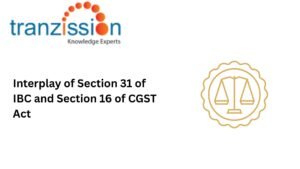
Analysis of Fast-Track CIRP for Small Companies

Table of Contents
Fast track corporate insolvency resolution process (CIRP) is carried out under Chapter IV of Part III of the Insolvency and Bankruptcy Code, 2016 (“the IBC”). It is a streamlined process designed to expedite the resolution of insolvency cases, especially for smaller companies or those with less complex issues. As per section 56, fast track CIRP for Small Companies has to be completed within a period of 90 days with one time extension of further 45 days. Hence, it is intended to be a more efficient way to resolve corporate insolvency within a shorter timeframe compared to the standard CIRP.
Eligibility Criteria for Fast-Track CIRP for Small Companies:
Fast track CIRP for Small Companies primarily focuses on smaller businesses and companies with limited assets and turnover. A corporate debtor can be subject to fast track CIRP if it is a small company, a startup, or an unlisted company with assets below a certain threshold, according to Section 2(85) of the Companies Act, 2013 and startups recognized by the Ministry of Commerce and Industry.
Read more : Legal consequences of misrepresentation in insolvency petitions
Procedure of Fast-Track CIRP for Small Companies:
The process is initiated by creditors or the corporate debtor and completion within 90 days, with a possible extension of 45 days:
- A creditor or the corporate debtor can initiate the process by filing an application with the National Company Law Tribunal (NCLT). This applicant must include proof of default, verified through records from an information utility or other means specified by the Insolvency and Bankruptcy Board of India (IBBI).
- The NCLT appoints an interim resolution professional (IRP) to oversee the insolvency process. The IRP must make a public announcement within 3 days of appointment, specifying the last date for submitting claims, which cannot exceed 10 days.
- Creditors must submit their claims within the specified time frame. The IRP then verifies these claims within 7 days of the last submission date and maintains a list of creditors.
- The IRP forms the Committee of Creditors (CoC) which comprises financial creditors, and assigns them voting shares based on their claims.
- The IRP conducts a meeting with the CoC to discuss the CIRP and potentially appoint a resolution professional (RP). The CoC votes to appoint a suitable RP.
- The RP is required to appoint a registered valuer within 7 days of their appointment. Further, the RP conducts due diligence on the corporate debtor’s assets and liabilities.
- The RP prepares an information memorandum and invites resolution plans from potential applicants. Potential applicants submit their resolution plans, which are evaluated by the CoC, if approved, submitted to the NCLT for final approval.
- The CoC approves the resolution plan, and the NCLT can approve it, potentially leading to the resolution of the insolvency. If the CIRP fails to result in a resolution plan, the corporate debtor may proceed to liquidation.
Roles of CIRP for Small Companies:
As seen from above, there are two main roles that are important in the success or failure of fast track CIRP, i.e., an insolvency professional as the IRP or RP and the CoC. Initially appointed, the IRP takes control of the debtor’s assets and forms the CoC. The RP manages the affairs of the corporate debtor as a going concern during the CIRP, including managing the company’s operations and overseeing the resolution plan. The CoC is the decision-making body and is responsible for accepting or rejecting the resolution plan. The CoC holds meetings to discuss the resolution plan and other relevant matters, such as reviewing and evaluating the resolution plan proposed by the IP, voting on the resolution plan, and ensuring that their interests are protected during the CIRP.
Benefits of Fast-Track CIRP for Small Companies
Fast track CIRP offers several advantages for small companies:
- Speed: It has the main aim to resolve insolvency within a shorter time frame, which is crucial for small businesses that cannot afford prolonged uncertainty. This speed allows for quicker recovery and business continuity, minimising financial strain, and potential losses.
- Cost-Effectiveness: The streamlined process reduces administrative and legal expenses, which can be particularly beneficial for small companies with limited financial resources.
- Asset Preservation: This process helps protect asset value by preventing long resolution proceedings and delays that can erode the value of a company’s assets.
- Challenges and Considerations
- Strict Timelines: Despite the benefits of fast track CIRP, it also puts pressure on the RP to act quickly and efficiently and can be challenging for companies that require more time for restructuring.
- Awareness: Small companies may not be fully aware of its benefits or eligibility criteria, and even if aware, the process’s procedural requirements might be perceived as complex. This may result in delays in resolving their financial distress due to this lack of awareness.
- Capacity Constraints: The obstacles faced by RPs and limited number of NCLT benches often impact their ability to dedicate sufficient resources and attention to each case.
Recent Developments and Case Studies
The Insolvency Law Committee aims to revise fast-track CIRP where financial creditors can agree on a resolution plan informally, outside of court, with the NCLT only involved for the final approval. This can expedite the process by reducing court involvement, streamlining procedures, and saving time and resources. The Essel Propack Limited Case highlighted the importance of complying with the IBC timelines and the potential consequences of delays in the fast-track process, hence emphasizing the need for prompt action by the RP.
Conclusion
Fast-track CIRP for Small Companies offers a potentially valuable solution for small businesses facing insolvency, but it is essential to address the challenges related to eligibility, time constraints, and the potential for complexity. By carefully considering these factors, stakeholders can ensure that this mechanism effectively supports the resolution of insolvency while minimizing the burden on small businesses.





